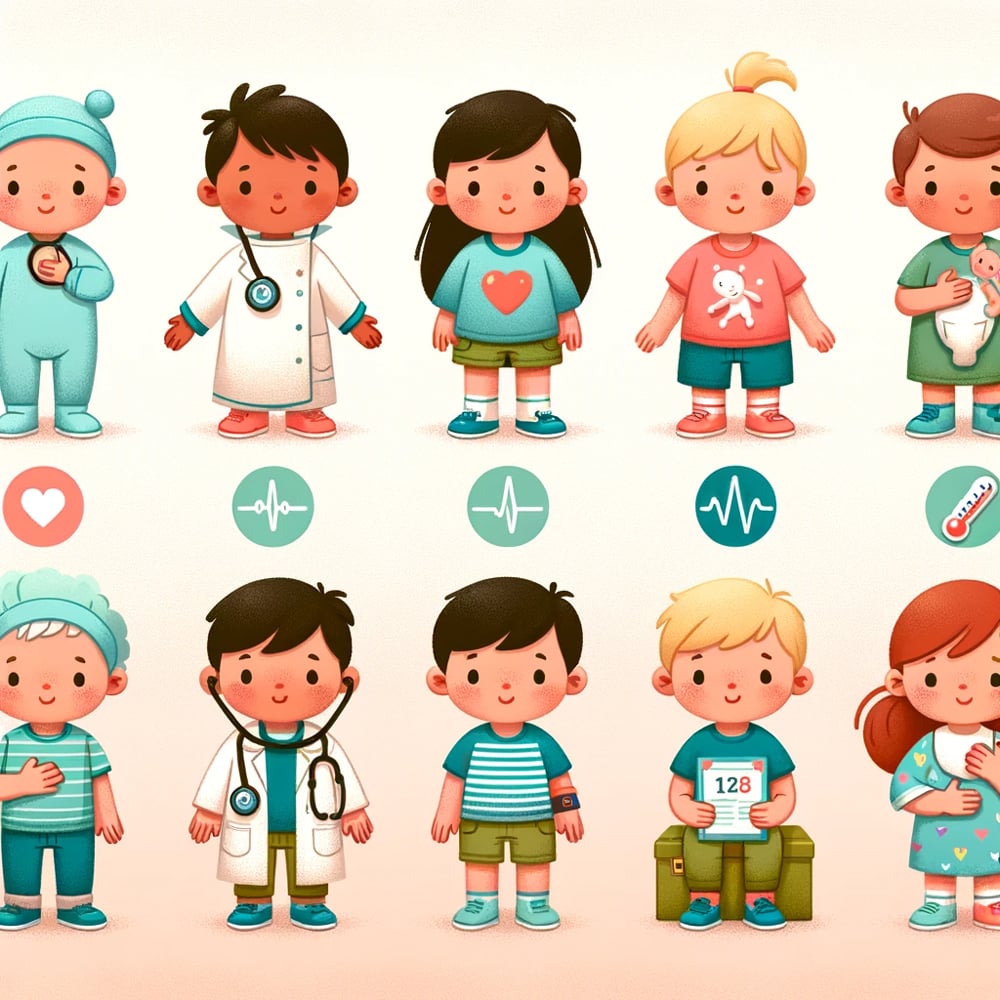Pediatric healthcare is a field that demands precision and attention to detail, especially when it comes to vital signs.
Pediatric vital signs are crucial indicators of a child’s health status, but remembering the varying normal ranges for different ages can be a daunting task for healthcare professionals.
This article aims to provide effective strategies and practical tips to help memorize and accurately measure pediatric vital signs.
Memory Techniques for Pediatric Vital Signs

Mnemonic Devices
Mnemonic devices are valuable tools for memorizing complex information.
By associating vital sign ranges with easy-to-remember words or phrases, healthcare professionals can quickly recall the necessary information.
Examples of Mnemonics: One could use a mnemonic like “Newborns Breathe Rapidly” to remember that neonates have a higher respiratory rate. Similarly, “Big Hearts Beat Slowly” could help recall that older children have a slower heart rate compared to infants.
The Major System
The Major System is a mnemonic technique that assigns consonant sounds to numbers, aiding in memorizing numerical information like respiratory rates.
Applying the Major System to Respiratory Rates: For instance, the number 3 can be associated with the sound ‘M’, and 0 with ‘S’.
Using this system, a respiratory rate of 30 breaths per minute for a neonate can be memorized as ‘MS’ or ‘Mickey Mouse’.
PAO System for Blood Pressure
The PAO System, which stands for Person-Action-Object, is another mnemonic method.
It involves creating a vivid image linking a person, an action, and an object to a specific number.
Example of Blood Pressure: A systolic blood pressure range of 60-90 for a neonate can be remembered as ‘Chucky Cheese (60) playing baseball (9 – Baz Luhrmann)’.
Memory Palace Technique
The Memory Palace Technique involves placing mnemonic images in a familiar spatial environment, like a room or a street, to facilitate recall.
Using Memory Palace for Vital Signs: One could visualize placing Chucky Cheese in the living room to remember neonatal blood pressure and Mickey Mouse in the kitchen for respiratory rates.
Understanding Pediatric Vital Signs

Pediatric vital signs include heart rate, respiratory rate, blood pressure, temperature, and pain assessment.
Each of these signs can vary significantly based on the child’s age, making it essential for healthcare providers to be familiar with these variations to ensure accurate assessment and diagnosis.
Age-Based Variations in Vital Signs
The first step in memorizing pediatric vital signs is understanding how they change with age. For instance, neonates typically have a higher heart and respiratory rate than older children.
Similarly, blood pressure ranges differ considerably from infancy to adolescence. Recognizing these age-based variations is crucial in evaluating a child’s health status accurately.
Practical Tips and Tricks

Measuring Pediatric Vital Signs
Measuring vital signs in pediatric patients can be challenging due to their smaller size and potential anxiety or discomfort during the process.
It’s crucial to use the correct equipment size and approach the child in a comforting manner.
Strategies for a Smooth Measurement
To ease the process, healthcare providers can use playful language, such as describing the blood pressure cuff as giving a “big hug” or turning the measurement process into a game.
It’s also important to be aware of the child’s emotional state, as crying or agitation can affect vital sign readings.
Age-Based Reference Chart

Having a quick reference chart that lists the normal ranges of vital signs for different pediatric age groups can be extremely helpful.
This chart can serve as a quick guide during patient assessments.
Importance of a Reference Chart
A reference chart ensures that healthcare providers have immediate access to accurate information, facilitating prompt and correct assessment of a child’s health status.
Resources and Further Reading
For more in-depth information and additional learning resources, healthcare professionals can explore online courses, books, and websites dedicated to pediatric healthcare.
These resources offer comprehensive knowledge and tips on pediatric vital signs and overall child health care.
Conclusion
Remembering pediatric vital signs is vital for accurate assessment and diagnosis in pediatric healthcare.
By utilizing mnemonic devices, the Major System, the PAO System, and the Memory Palace Technique, healthcare providers can effectively memorize and recall these vital signs.
Additionally, practical tips for measuring vital signs and having a reference chart can further aid in providing excellent pediatric care.
FAQs about How to Remember Pediatric Vital Signs
What are the key pediatric vital signs?
Pediatric vital signs include heart rate, respiratory rate, blood pressure, temperature, and pain assessment, which vary with the child’s age.
Why do pediatric vital signs change with age?
Children’s bodies grow and develop rapidly, causing changes in vital signs like heart rate and blood pressure. These changes reflect their evolving physiological needs.
Can mnemonic devices help in remembering pediatric vital signs?
Yes, mnemonic devices are effective tools for memorizing the normal ranges of pediatric vital signs by associating them with easy-to-remember words or phrases.
How does the Major System aid in memorizing pediatric vital signs?
The Major System uses a number-consonant technique to create memorable associations, helping healthcare professionals remember numerical values like respiratory rates.
What’s the importance of a pediatric vital signs reference chart?
A reference chart provides quick access to the normal ranges of vital signs for different pediatric age groups, ensuring accurate and prompt health assessments.

Dr. Mary G. Trice is a renowned pedodontist based in Queens, NY. With an unwavering dedication to children’s dental health. In addition to her clinical practice, Dr. Trice is the writer and manager behind the informative platform pediatricdentistinqueensny.com. Through this site, she offers valuable insights, tips, and resources for parents and guardians, aiming to bridge the gap between professional dental care and everyday oral hygiene practices at home.
